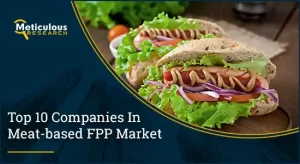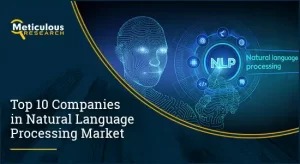3D food printing market is projected to reach $11.3 billion by 2030, at a CAGR of 50.2% from 2023 to 2030.
3D-printed food was initially developed to craft unique and intricate food designs while revolutionizing food production by improving efficiency and reducing costs. These printers are primarily used for creating complex shapes and designs, not for cooking ingredients. Typically, the printed food is either ready for consumption or needs to be cooked externally in an oven or on a grill after printing.
Download Complete Sample PDF Copy Here: https://www.meticulousresearch.com/download-sample-report/cp_id=4995
This technology is reshaping the consumer experience by allowing for more intricate and original food presentations with innovative decorations. Beyond aesthetics, 3D-printed food holds vast potential benefits, such as addressing malnutrition, improving food security, and creating new value chains. Key drivers for 3D food printing include on-demand production, customization, and the ability to achieve geometric complexity. The transformative potential of this technology is evident in several areas:
Customized Food Design – Traditional food customization involves manual labor, resulting in low production rates and high costs. 3D food printers offer a platform for creating intricate designs and experimenting with forms and flavors that would be nearly impossible by hand. They can also customize colorful images and shapes onto edible surfaces, empowering users to craft new recipes and dishes creatively, quickly, and with greater nutritional value. From intricate cocktail garnishes to 3D chocolate structures, candies, and sugar sculptures, 3D printers offer a level of precision that surpasses even skilled chefs.
Check complete table of contents with list of table and figures: https://www.meticulousresearch.com/product/3d-food-printing-market-4995
Personalized and Digitized Nutrition – As interest in food customization grows, 3D food printing allows for the creation of food with specific shapes, textures, nutritional profiles, and flavors. It enables precise control over individual diets by digitizing and personalizing nutritional content according to a person’s health and energy needs. Personalized 3D-printed food could address malnutrition and significantly enhance overall well-being. For example, the Foodini by Natural Machines (Spain) is a 3D printing kitchen appliance that prints natural ingredients into exact portions and shapes, fostering creativity in cooking and promoting healthier eating habits.
Expanding Food Sources – 3D food printing can also widen the range of food materials available for consumption. Non-traditional ingredients like high-fiber plant materials, animal by-products, and insects can be used to create various foods. This technology can print alternative protein sources such as vegetables, algae, and insects, which offer healthier diets by reducing reliance on animal proteins. These alternatives are lower in cholesterol and require less space and water than traditional livestock farming.
Creating New Value Chains – 3D food printing has the potential to disrupt and expand existing food value chains. It can lead to the development of entirely new products and services, transforming the way food is manufactured and prepared. This could even eliminate the need for traditional food providers, such as grocery stores and chefs, by enabling individuals to produce food on-demand at home.
Simplifying the Supply Chain – The technology enables on-demand food production and supports a build-to-order strategy, reducing the need for large inventories. Production can be located near consumers, reducing the need for long-distance shipping and minimizing packaging and distribution costs. Additionally, 3D food printing could play a key role in simplifying food distribution in complex or remote locations, ensuring easier access to customized food options while streamlining supply chains.
Buy Now: https://www.meticulousresearch.com/Checkout/49174855
Conclusion
In conclusion, 3D food printing represents a groundbreaking advancement in the food industry, with far-reaching implications for customization, nutrition, and supply chain efficiency. It enables the creation of intricate food designs and personalized nutrition, offering a healthier, more sustainable, and innovative approach to food production. By expanding the sources of food materials and transforming traditional value chains, 3D food printing has the potential to address critical global challenges like malnutrition and food scarcity. As the technology continues to evolve, it is poised to revolutionize the way we create, distribute, and consume food, simplifying supply chains and opening new avenues for culinary creativity.
Contact Us:
Meticulous Market Research Pvt. Ltd.
1267 Willis St, Ste 200 Redding,
California, 96001, U.S.
USA: +1-646-781-8004
Europe : +44-203-868-8738
APAC: +91 744-7780008
Email- [email protected]
Visit Our Website: https://www.meticulousresearch.com/
Connect with us on LinkedIn- https://www.linkedin.com/company/meticulous-research






